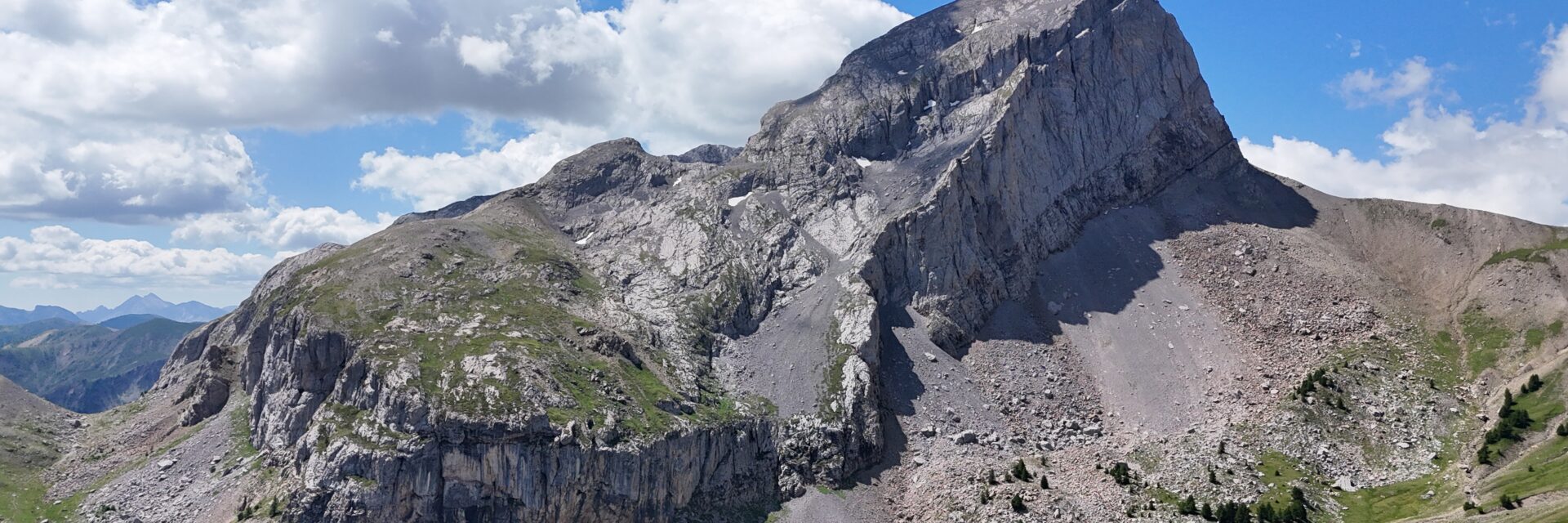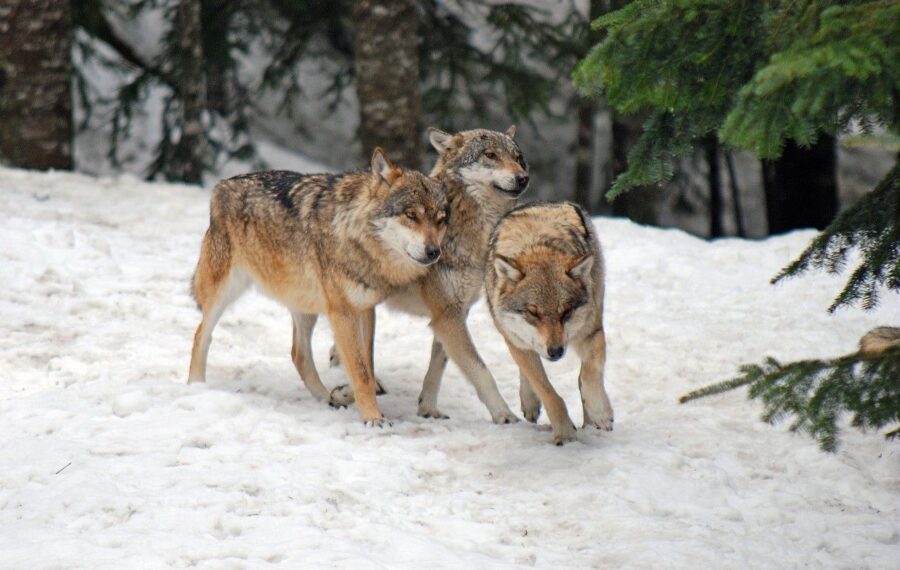
The wolf of Pra Loup

The wolf of Pra Loup
And the wolf? Totem of the Pra Loup resort
Naturally present in the massif, the wolf is part of the Mercantour ecosystem. Discreet, it remains difficult to observe, but its presence testifies to the richness of the food chain and the ecological balance of the region.
Canis lupus
The wolf, the discreet emblem of the Mercantour
Since its natural return in 1992, the wolf has discreetly resettled in the Mercantour massif. A mythical and fascinating figure, Canis lupus now lives in packs, out of sight, in the forests and mountain pastures of the park. To get to know it better is to learn to share this territory with one of its most emblematic inhabitants.
A silhouette that does not deceive
The wolves present in France belong to the Italian subspecies (Canis lupus italicus). Their beige-grey coat, sometimes tinged with red, is marked by a black border on the front legs. Their backs are darker than their bellies, and their faces have a characteristic light mask.
The adult male weighs between 25 and 40 kg (females a little less), for a height at the withers of 60 to 70 cm. Its wide head and short, rounded ears clearly distinguish it from a dog.

A master of varied environments
Although it prefers forests and mountain pastures, the wolf adapts to many habitats: moors, scrubland, high-altitude areas or valley bottoms… The most important thing for him? The presence of a sufficient number of wild prey (chamois, mouflons, deer, etc.).
A highly structured social organization
The wolf lives in a close-knit pack, composed of a dominant pair (called “alpha”) and its offspring. Each group occupies a territory of 150 to 300 km², which it marks with howls and olfactory signals.
At certain times (spring, autumn), the young leave the pack to look for a new territory: these are called dispersing wolves, capable of travelling several hundred kilometres.
The wolf is most active at dawn and dusk. Thanks to excellent night vision, it can cover up to 30 km in one night, in search of food.
An opportunistic but selective regime
A large carnivore, the wolf prefers large wild ungulates: deer, chamois, roe deer, etc. But under certain conditions, domestic flocks can also be targeted.
In the Mercantour, where the species has been established for a long time, attacks are relatively stable, although still significant (about 500 attacks for 1,500 victims each year). The wolf adapts its strategy according to the abundance of prey. A pack has changed its diet by switching to roe deer and chamois after the scarcity of mouflons.
A collective life cycle
Reproduction takes place between February and March. Only the alpha pair reproduces, the other members of the pack ensure the education of the wolf pups born in the spring.
• Birth: April-May, 4 to 6 young on average
• Den: natural shelter near a water point (stump, burrow, etc.)
• Weaning: at 2 months
• Learning: games, body language, hierarchy
• First hunts: in the fall
Note: on average, only one in two wolf pups reaches adulthood. The size of the pack is always regulated by the territorial balance.
An expanding population
Present in 63 zones of permanent presence (ZPP) in France in 2017, the wolf continues to expand its territory.
The PACA region, and particularly the Mercantour, remains a historic heart of its presence. About 8 packs are currently recorded there, although it is difficult to draw their precise boundaries, some of which are cross-border.
A protected species, under close surveillance
The wolf is protected by the interministerial decree of 17 April 1981, within the framework of the Berne Convention and the Habitats Directive.
However, derogations are possible to prevent attacks on herds, provided that the protective measures (fences, dogs, surveillance) have failed. All decisions are taken at the national level, on the basis of rigorous technical and scientific monitoring.
Can you observe a wolf?
The wolf is not looking for himself, he discovers himself… sometimes.
Most of the meetings are furtive, at a distance. If you come across a wolf, remain discreet, avoid sudden movements, never try to approach it. He will probably have seen you before you.